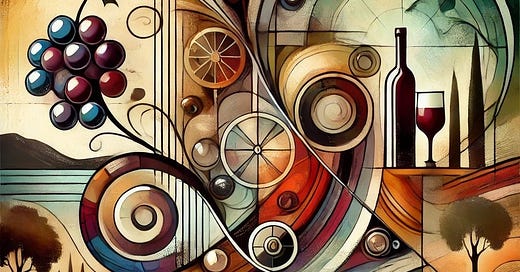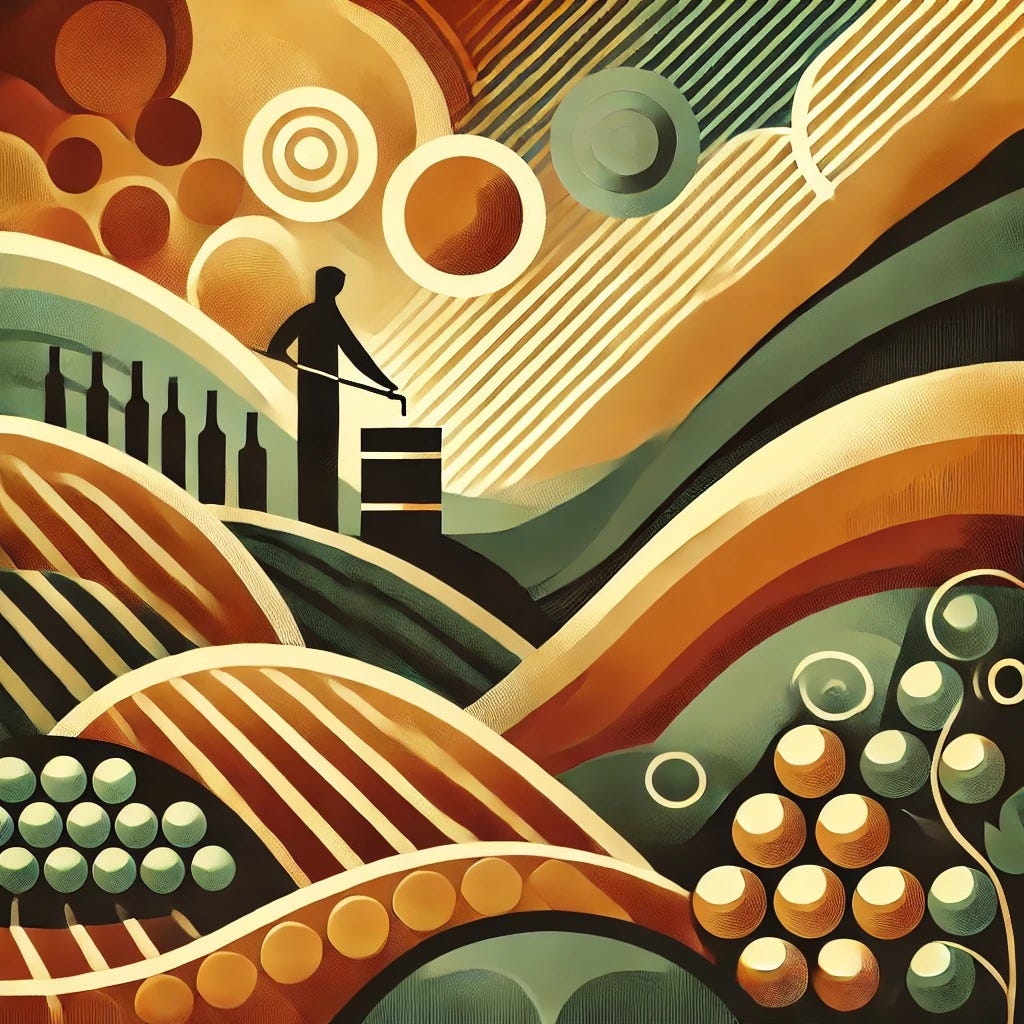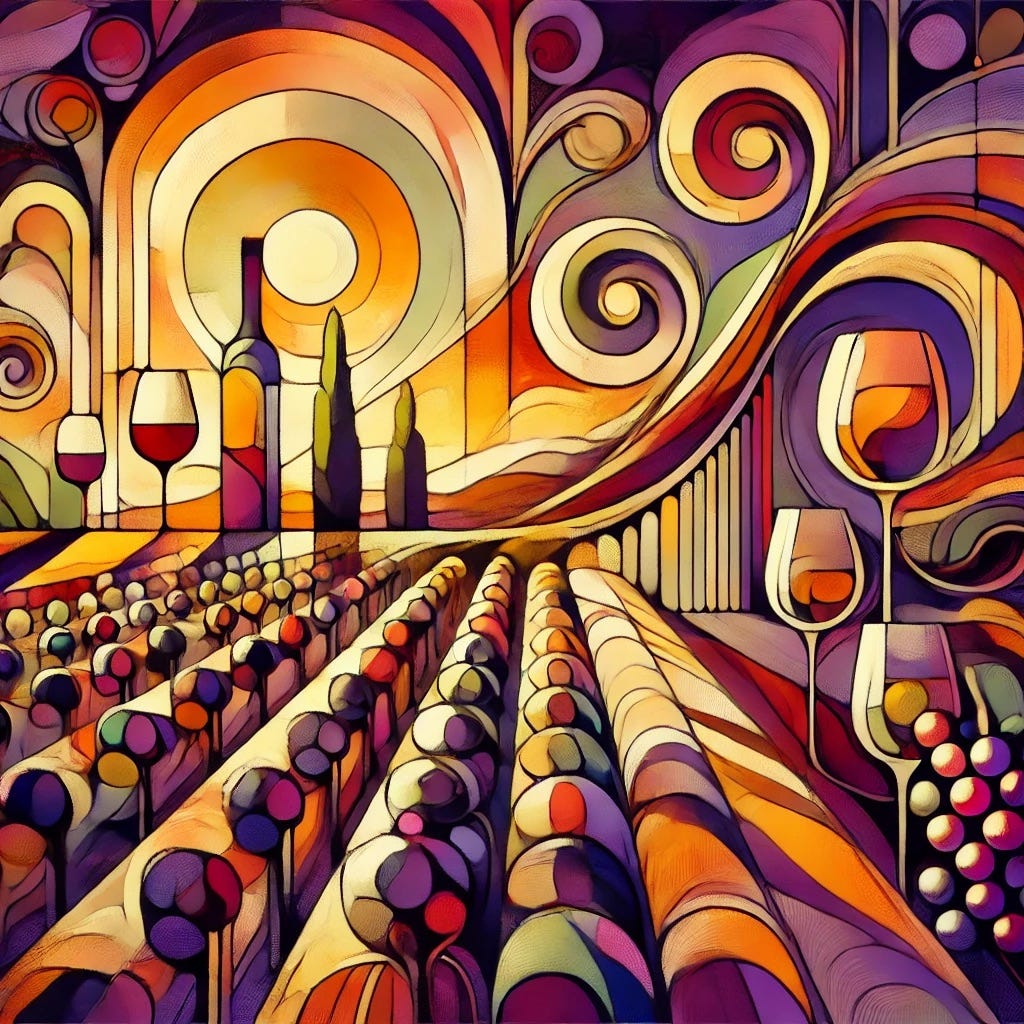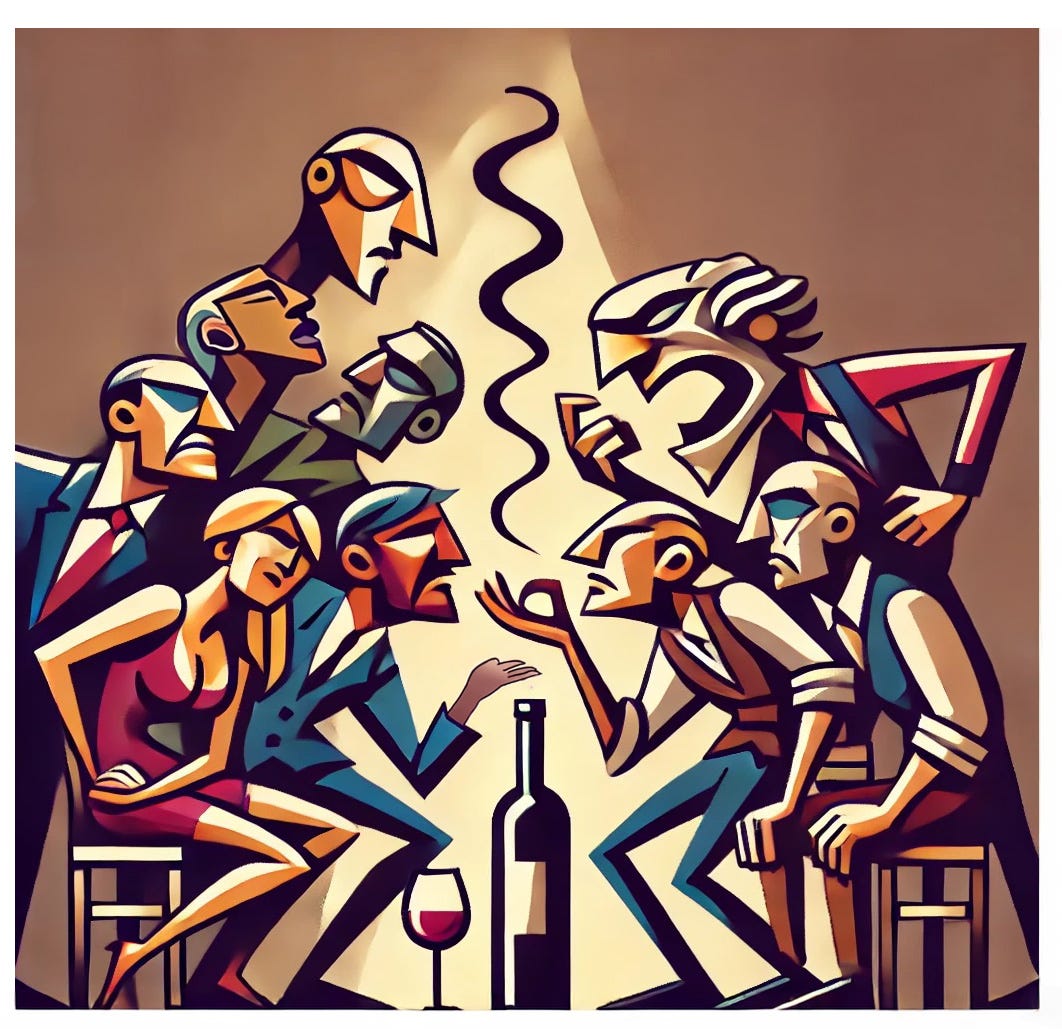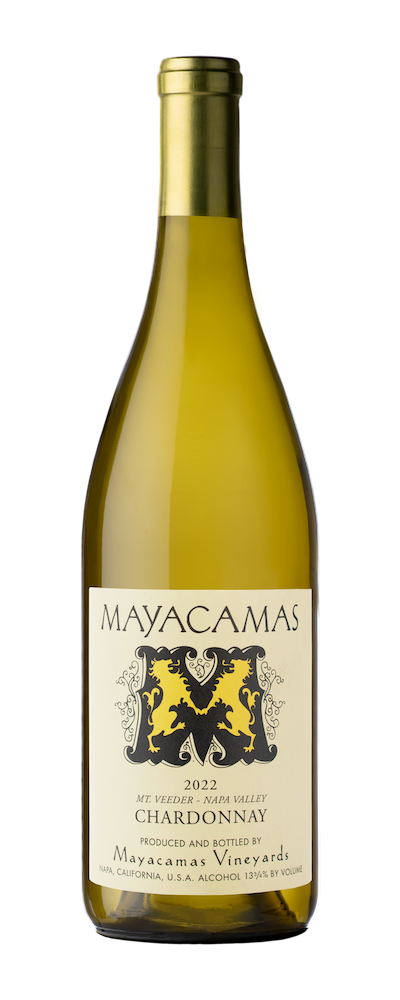NAPA VALLEY, Calif. — California makes some of the best wines in the world. Millions of American wine-drinkers would agree. This has been true for at least 40 years. Our better wines were formulated based on grape varieties and not on regional considerations. This is an idiosyncrasy left over from the Prohibition era.
In most of the fine wine regions of Europe, laws dating back centuries dictated which grape varieties could and could not be planted in specific, delineated areas. That led to the best wines being called not by their grape names but by their unique locales since the grapes could only be those that were approved. For example, in Italy’s Tuscany, Chianti was the name of the wine because that was the name of the district. The primary grape of Chianti was sangiovese, and all Chiantis were — and to this day still are — required to have it as the majority grape.
When Prohibition ended in 1933 and for several years after, almost all California wine was generic. And deferentially, the generic names that California wineries adopted actually came from France, Italy or Germany – names such as Burgundy, Chianti and Sauterne (without the finishing S). The American wines had absolutely nothing to do with their European namesakes.
A “Rhine wine” from California used a name from Germany, where riesling was the main grape. However, our version could have been made from any white grape. And the wine did not have to have even a passing relationship to the wine that Germany made from the riesling grapes.
Big was in; acidity was out. Now balance is coming back into favor, and I’m hoping we will see more euro-styled wines.
It wasn’t until the 1940s when the influential travel writer and wine expert Frank Schoonmaker began to encourage California winemakers to abandon generic names. He argued that consumers would have no confidence in the quality of California wines if they had no awareness of what grapes were in the bottle. And slowly, over 20 years or more, varietal wine grew into its new category of “fine wine.”
Although some Napa Valley producers had made excellent strides in the production of cabernet sauvignon starting as early as 1900 and at least one exalted Sonoma County producer also reportedly made a stellar cabernet in the 1870s (!) in Sonoma Valley, varietal labeling as espoused by Schoonmaker didn’t actually take hold broadly until the late 1960s, notably when the visionary Robert Mondavi opened his winery at Oakville.
California’s varietal wines, especially Napa Valley cabernet and chardonnay, flourished in the 1970s, when early wine-lovers discovered how sensational these wines were and that they compared favorably to the red Bordeaux wines of France as well as white Burgundies.
In the 1980s, however, the entire category of California varietal wines began to fray at the edges when several producers decided they could make chardonnays by adhering legally to the federal mandate of a 75% minimum varietal content but use a bare minimum of chardonnay fruit. Their aim was to make inexpensive chardonnay that, unfortunately, ended up tasting more generic than varietal. Such wines were rather cheap.
Cut-rate varietal bottlings began to be widely produced, and their impact in the market eroded the image of better varietal wines. One major problem was that some inexpensive wines carried the term “Reserve,” which has no legal definition. It had previously been used exclusively on high-caliber wines. Consumers without much wine knowledge were easily confused.
Soon, as might be expected, other lower-priced varietal wines started popping up with all kinds of flavors that had nothing to do with the grapes named on the front label. This included zinfandel, petite sirah, pinot gris and sauvignon blanc. All of the cheaper products identified the source of fruit as “California.” Thanks for enlightening us. And 25% the grapes used in these cheaper wines were inexpensive and probably had nothing to do with the grape variety named on the front label, either.
The original concept of fine wine in Europe was linked directly not with grape varieties but with regions – each of which imparted unique characteristics. That concept began to display itself in California in the 1960s and 1970s, too. True wine-lovers discovered the joy in the subtle differences they found in distinctive styles, from one sub-region to another. Instead of just paying lip service to the Europe model, Napa cabernets from Stag’s Leap Rutherford, Spring Mountain, Diamond Mountain and others frequently and charmingly differed from one another.
But then by 1990s the European notion of regionality in cabernets that we briefly saw here in the 1970s began to evaporate. A few regionally distinctive varietal wines were still being made, but the lower-priced impostors were destroying that concept. And then came the final death knell: rating wines by numerical score.
Obtaining an extremely high score from a wine critic was mandatory and directly linked to how fast and for how much a wine would sell. This concept seemed to dominate everything. Soon house style, regional distinctiveness, and varietal precision all were obliterated in the quest to sell something with high scores and at an exalted price and very quickly.
But to get a high score a winery had to make a cabernet that was appealing to the scorers, and that meant that all cabernets had to be extremely concentrated, high in alcohol and tasting of lots of French oak. These wines were so powerful that any regional characteristics were wiped out as unnecessary. In fact, it was even likely that any regionally distinctive characteristics might actually be detrimental in terms of achieving a high score.
High scores were associated with homogeneity. Regional character was associated with heterogeneity. And never the twain…
Meanwhile, the less-expensive, generic-tasting so-called “fighting varietals” actually served a significant purpose. Many were tasty to newcomers, and their reasonable prices helped to increase the overall wine consumption in the United States. But the California-designated wines, as good as they were for everyday use, were still somewhat generic in aroma and taste. Most lacked the proper acidity to actually work with food. But Americans in the main in didn’t care about such esoterica. So even though wine consumption increased, wine knowledge did not.
A few wine writers likened the cheaper “California” wines to the inexpensive wines of Europe. That’s a charming fib. Simple French “vin ordinaire” or Italian “vino da tavola” that go with simple meals at countryside cafés often arrived unceremoniously and without charge. (French tavern signs that say “degustation vin compris” refer to a tasting menu with wine included.) And they differ from our cheaper wines because they were continental in origin and therefore made to go with food.
Wine-lovers, who could be brutally cynical, often referred to the cheap “California” offerings as worthless and ignored them. Their desire was for fine wine. As a result, in the later 1990s California developed a third category of wines – upscale generics. They were aimed at people who didn’t mind spending a lot of money on generic wine. I view this as the worst category of wine ever devised in California.
These blended reds differ radically from one another, but they all do the same thing: give people who don’t know anything about fine wine something they can coo about. Most of the wines are made to be soft and sweet. They lack anything related to fine wine. I see them as a rip-off. But again, they serve a purpose. A lot of people like them – even though prices for some can be absurd.
I describe a fine wine as having either regional or varietal characteristics (or both). Most blended reds have neither. They are amorphous. After trying many of these, including some that sell for $40 and $50 a bottle (and more), I have concluded that they have nothing to do with wine. That may sound harsh, but then again, so were the wines – harshly loaded with alcohol. They are clumsy and jammy and terrible with savory food.
So let us return now to Schoonmaker, co-author of a major wine encyclopedia. His 1941 book “American Wine” implied that California was growing some really good fruit and that lacking laws as to which grapes could grow where, California probably ought not to use regional identity but consider using the grape varieties on the front labels. (At the time, the government required only 51% of the named grape to be inside the bottle.)
In other writings, Schoonmaker pointed out that the greatest wines of Europe reflected their unique soil-related characteristics. This gives “euro-styled” wines several visions of the same grape variety. A classic example is chenin blanc, a grape that can make a terrific white wine with slightly different aromatics and textures, depending on where it is grown. There’s not much chenin blanc left in cooler California vineyards because it’s tricky to grow. A small amount is still grown in the Napa Valley, and it makes a delightful, soft, melon-scented wine.
Today there is an enormous rebirth in quality chenin blanc, both here and in France. In France, it grows prolifically throughout the Loire Valley. There its Savennières makes a stunning, complex and briskly acidic white dry wine that ages for 10 to 20 years and is perfect with lighter-weight foods. Another Loire district, Vouvray, makes chenin blancs that are softer with honeydew melon scents. Vouvray Sec is drier and more complex. And there are Montlouis, as well as sparkling chenins.
Even the historic French red wine district of Bourgueil is turning to chenin. The excellent wine writer Jason Wilson, in a recent online issue of Fine Wine Review, wrote that there are fewer than 50 acres of chenin blanc in Bourgueil, but plantings of it are increasing. (Chenin blanc also is extremely popular in South Africa, where it’s also called “steen.”)
Euro-style wines may be making a slow and unobtrusive comeback in Napa in the last couple of years. Not that they ever really left, but there is a good reason why they went into hibernation. Big was in; acidity was out. Now balance is coming back into favor, and I’m hoping we will see more euro-styled wines.
European wines all are made in a climate called continental. Europe has less regular sunlight than California because of cloud cover and other weather conditions that mitigate against extremely high sugar content. High sugars are the byproduct of West Coast’s sunlight. Except for some portions of coastal areas, such as Willamette Valley in Oregon, which gets more rain than the Napa Valley, the West Coast is blessed (and cursed) with lots of sun. Perhaps too much of it. Sunlight pushes grapevines to make higher sugars, which are converted into alcohols that, in some cases, make wines that are not only harsh but that can mask delicate flavors that the greatest wines usually display.
When I buy a European wine, I don’t automatically assume it will be soft and approachable, as are so many California wines. European wines usually have slightly better acidity levels. As a result, they are more frequently described as having “minerality” and thus better not quaffed. Not that the European wines are noticeably more acidic, but, as you might expect, they are decidedly more orientated to being served with food.
If a Californian wanted to emulate a European-styled wine with a California-grown grape variety, the best chance would be to find or plant a vineyard where the grapes ripen properly at lower sugars. Typically that would be a cool vineyard, such as one growing at high altitudes or with a view of a major water source or where there are significant breezes that affect moisture in the grapevines’ leaves. Parts of Carneros remain cool enough to produce euro-styled wines, as do many of the vineyards in Oak Knoll.
Many mountain vineyards in Napa Valley also have climates cool enough to produce wines with minerality. Some of the most interesting wines that Napa produces are high-altitude merlots that are grown on meager soils that do not impart many nutrients. As the French say, the best wines come from vines that struggle.
Among the wineries that make euro-styled wines more consistently are Lola (Seth Cripe’s superb Calistoga property), Steve Matthiasson on Mount Veeder, Smith-Madrone atop Spring, Randy Dunn at Dunn Vineyards on Howell Mountain, Carmel Greenberg at Clos du Val, John Williams at Frog’s Leap and Trefethen Vineyards in Oak Knoll.
Berger’s Wine Discovery of the Week
2022 Mayacamas Chardonnay, Mount Veeder ($65) – Talk about authenticity when it comes to a euro-style wine that pays homage to Burgundy as well as California’s history of making quality minerally, mountain-grown chardonnays. This near-perfect wine hits every high note and is a sensational example of several concepts. First of all, it represents the mountain property off Lokoya Road that was elevated to greatness by Bob Travers into one of the most iconic wineries in the valley. It also shows a style of what it has always been, dating back to the 1980s, when a distinctive flinty minerality always showed through. In this vintage winemaker Braiden Albrecht had the fruit hand-harvested earlier than most would have, in August, a key element in its brilliant crisp structure. Then, in the house’s tradition, he did a single fermentation before the wine went into mostly used French oak barrels, 40% of them large-format vessels. The result is a wine with the purest of chardonnay fruit showing mountain-grown stony characteristics and an astounding complexity that includes traces of toasted hazelnuts but without any of the oak that you might see in a wine intended for the oak to show. This is simply an astounding example of how good a “rich yet delicate” California chardonnay can be. From the winery website: “The wine opens with lifted aromatics, tones of chamomile, yuzu, and marzipan. Compact, focused, and layered on the palate with lemon-grass supported by a lovely fruit set of tangerine, white peach, and Bartlett pear. On the palate there is plenty of drive and energy. Secondary flavors of bergamot, and green cardamom round out the mid-palate. The finish is long with lingering notes of orchard fruit, flint rock, and salinity.”
This is one of the finest chardonnays being made in California today and one of the best I have tasted in the last decade. Some people might find this wine to be a bit more expensive than they normally would spend on chardonnay. However, compare it to any French Burgundy at two or three times the price, and it holds its own – and probably beats most of the competition. I bought several bottles because I firmly believe it will be better in two to four more years.
If today’s story captured your interest, explore these related articles:
Dan Berger’s Wine Chronicles: Wine in Context
Dan Berger’s Wine Chronicles: Proof That Napa’s Older Cabs Can Age
Dan Berger’s Wine Chronicles: Napa and Sonoma as True Vinous Siblings
Dan Berger’s Wine Chronicles: The Nostalgia and Nonsense of Barrel Tastings
Dan Berger’s Wine Chronicles: The Evolution and Art of Winemaking
Dan Berger has been writing about wine since 1975.


